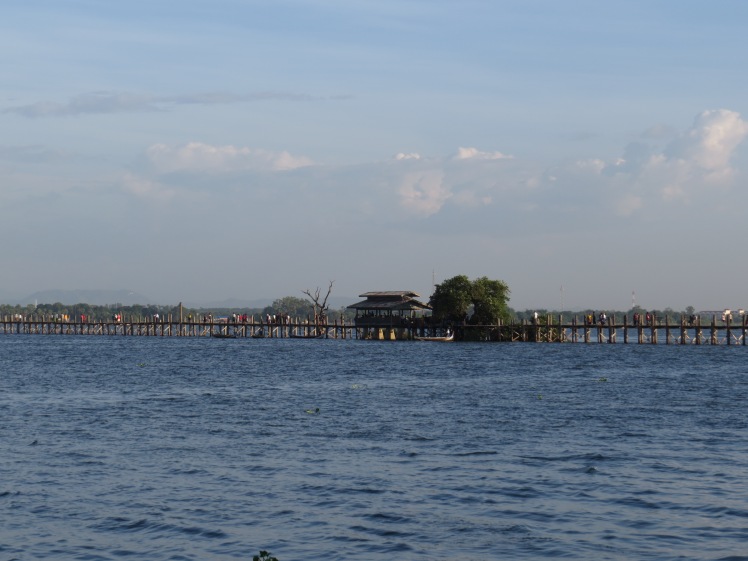
The name Mandalay is famously associated with exoticism due to Rudyard Kipling’s poem and glamour from the Las Vegas casino, but Myanmar’s second city and former royal capital unfortunately doesn’t have much of both in my opinion. What it does have is a number of varied historical sights around it, being surrounded by several old capitals (Burmese history is complex) – Inwa, Sagaing and Amarapura. These towns (the latter two) and village (the former) don’t exactly have their former prestige but they feature impressive monasteries, the world’s longest teak bridge and a pleasant hill covered with temples.
Mandalay itself does have a massive palace complex surrounded by a moat, though almost all the buildings are reproductions since most of the palace was destroyed by bombing raids during World War II, which is why I didn’t bother to visit it. Instead, I went to Mandalay Hill, which isn’t that high but has fine sweeping views of the city, the Irrawady River, and the mountains to the north and east. However, Mandalay is considered the country’s cultural hub and contains a lot of artists, craftsmen and jewelry artisans, which I didn’t have the time to check out, and which might have made me appreciate the city more. Instead, I went on a full-day tour of the three former capitals and the next day, I visited Mandalay Hill and a couple of temples in the city, before leaving at night to return to Yangon.
Mandalay is not as filled with vehicular traffic like Yangon, but it still has a lot of old, noisy motorcycles and antique buses. It also does not boast Yangon’s old colonial buildings though it seemed older and less prosperous. The neighborhood where I stayed in was a mix of decent and rundown streets and there was a Buddhist temple right behind my hotel, which always had a large number of locals sitting in the front, one of whom was my driver for my two trips.
Amarapura Sagaing, and Inwa
The first stop was to Mahagandayon monastery in the morning where the star attraction was seeing the monastery’s hundreds of monks march to the dining hall for breakfast. The monks ranged from kids to teenagers to middle-aged people and they stoically put up with tourists like me standing at the side snapping away. It sounds a little exploitative but it is a known tourist attraction and the monastery does not seem to mind.
The Burmese are a very religious people who take their Buddhism seriously which can also be seen from the large number of Buddhist temples everywhere, including hill tops. I would later learn from my driver Joker (that was seriously his name) that becoming a monk for a short time was a rite of passage for most Burmese boys, hence the number of youngsters and teenagers in the procession. Joker himself had done it for a month in his village’s monastery when he was a child.
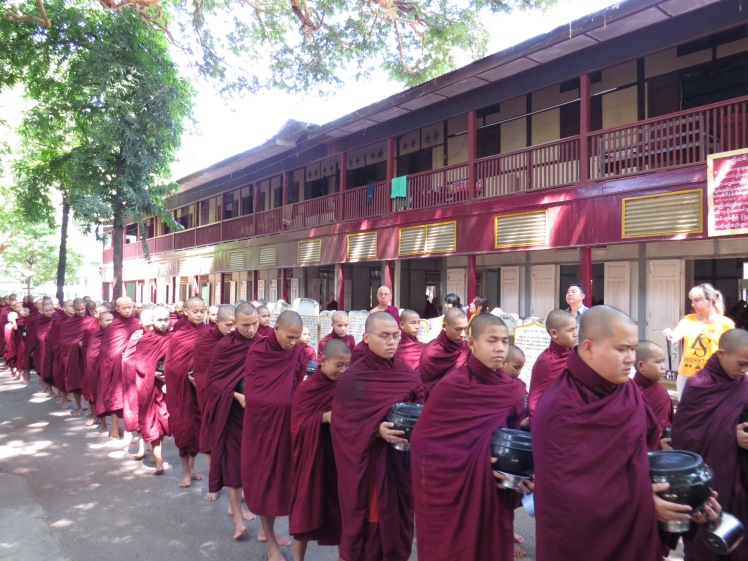
We then went to Sagaing and its temple-covered hill. The town was a former capital of a kingdom in the 14th century and briefly the national capital. Walking up a covered stairway that went straight to the top, and my first hike in a year since I had my foot surgery, I reached the large temple on top. There was a nice view of temples and the Irrawady River below and the large teak transport ships carrying their cargo of massive logs down towards Yangon. There was the amusing sight of locals getting excited by white tourists and rushing to take photos with them, something that still happens in China.
Inwa was the next stop. Here, my driver dropped me off by a riverside restaurant where I ate at before getting onto a boat to go across to Inwa. I initially thought Inwa was an island but instead it is a village located on the opposite side of the riverbank from which it was faster to cross by boat than by bridge, which was lower down. When I got off the boat on Inwa, I saw several horse-led carts and their drivers, the regular method of transport for tourists. I chose one and subsequently endured over an hour of a rickety horse-cart ride to Inwa’s famous landmarks – a teak monastery, the stone remains of a temple surrounded by rice patty fields and a watchtower that was the only remnant of a royal palace. The wooden village houses were just as interesting. It was a strange experience being taken around on a rocking horse cart around a rural village that was supposedly a royal capital up until the 19th century when a massive earthquake forced it to be abandoned.
While the views were fine, it wasn’t so nice seeing how the horses were treated. For instance, my driver whipped our horse every minute or so during our journey and I saw a few horses on the side of the road that were in rough shape with haggard looks, open cuts on their legs and mangy skin. Unfortunately, this was Southeast Asia and animal rights is not exactly a widespread concept.

After I took the boat back to shore, Joker picked me up and drove me back to Amarapura to a spectacular all-white temple which is indeed named in the Lonely Planet guide, but I am unable to Google for. Finally, we went to the 1.2km U Bein bridge, the longest wooden bridge in the world and a great place to view the sunset. The bridge is supported by wooden pillars and has roofed huts and pavilions in between. I walked across the bridge, took a short stroll around the village on the other side, and came back over. I still had an hour to spare and it was just too damn hot plus I was tired from being out the whole day, so I found my driver. As we drove away from the bridge, with the river on one side and a swamp on the other side with very murky water, I was surprised to see lots of shacks. Living just minutes from one of the area’s biggest tourist attractions, those poor folk and their swamp slum were a stark reminder of the poverty in the country.
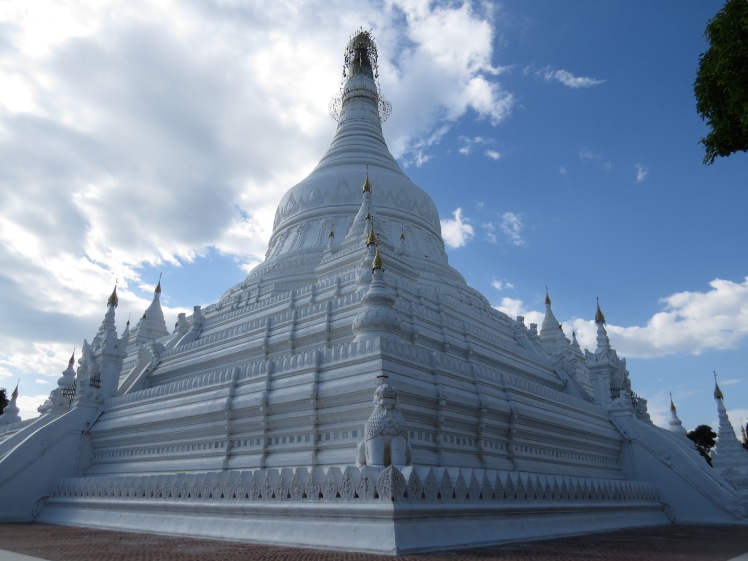

Amarapura

Sagaing
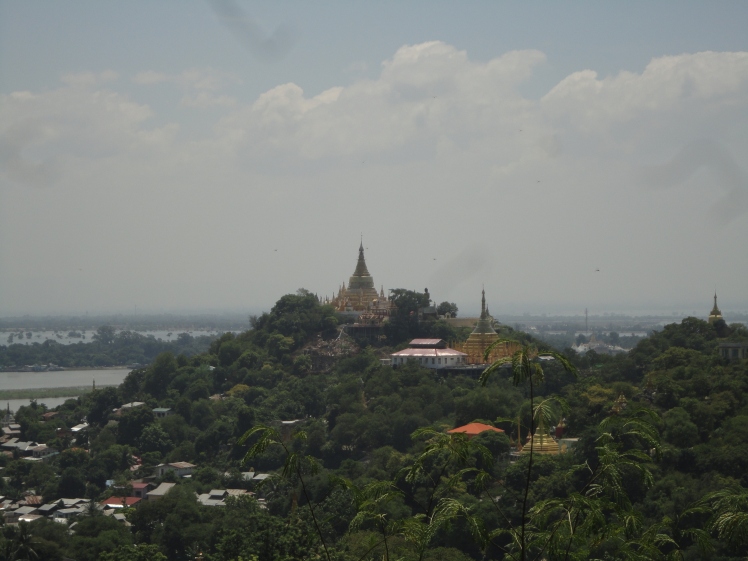





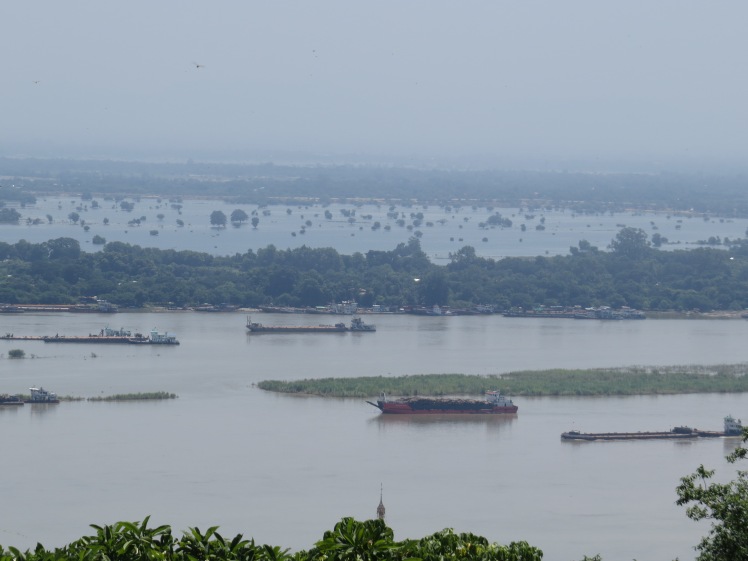
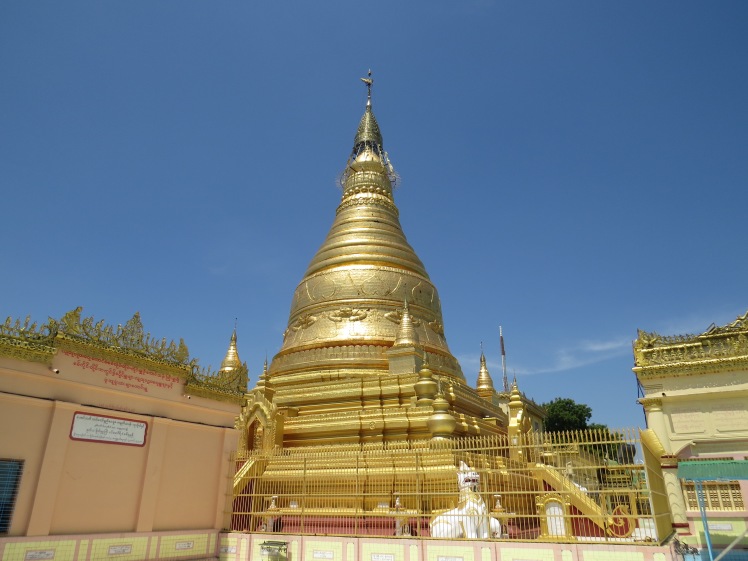





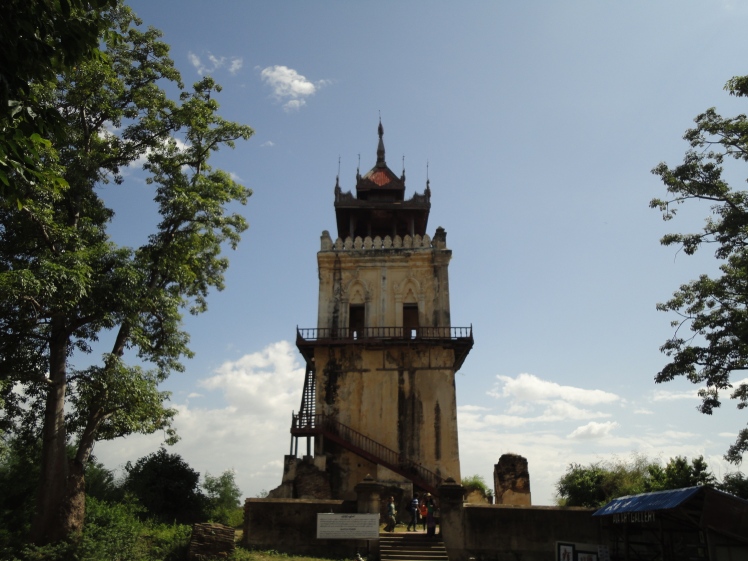

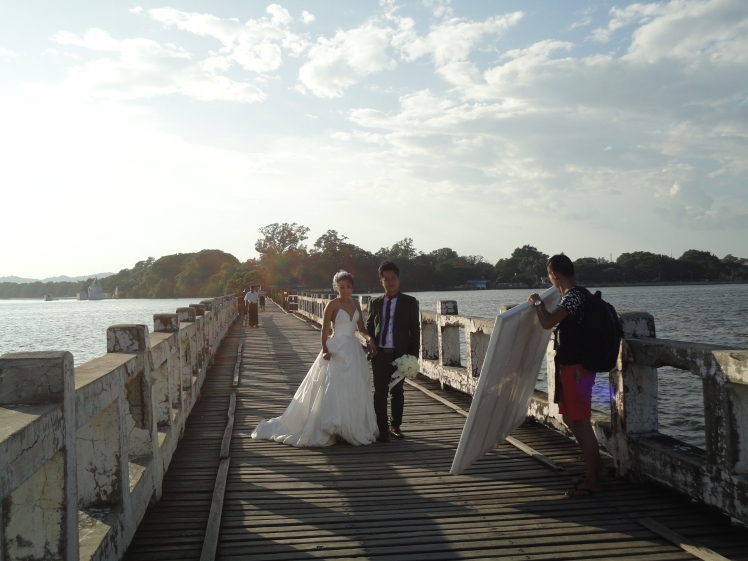
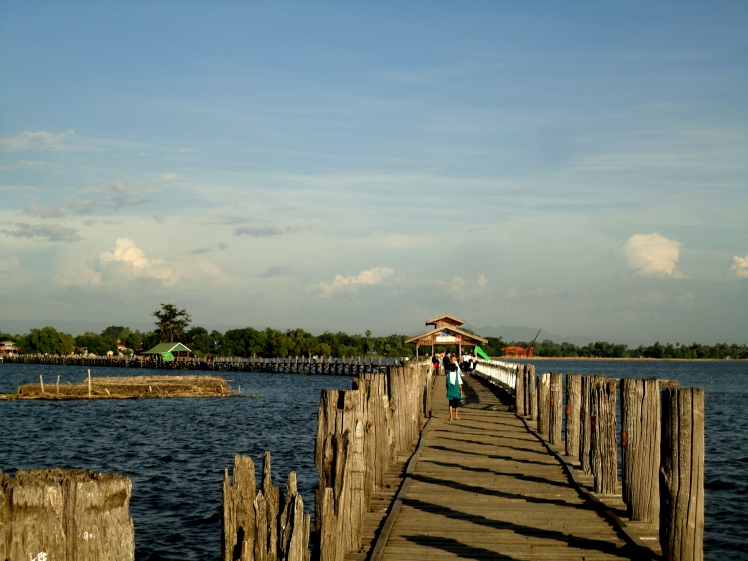
Nice description and photos! How much I would like to visit Mandalay after reading your post!
LikeLike
Thanks, I hope you to have the chance to someday.
LikeLiked by 1 person
Wonderful post!
LikeLiked by 1 person
Of all my two visits to Myanmar, I’ve yet to visit Mandalay…so this post has been a great introduction. Eventually, I hope to make it to the city and see the sights, history, and culture. Your photos and writing has kindled my curiosity 🙂
LikeLike
Thanks for your comment and I’m glad you enjoyed the post. I think Mandalay would be worth a visit though the city itself not as interesting as Yangon. You’d probably enjoy the outer sights like the U-Bein bridge and Inwa. Hope you get the opportunity to go there.
LikeLike
Nice post. Looks like a great trip. How was the food?
LikeLike
Thanks. It was quite good. The food was ok, not bad, but not special to be honest. I had one of my better meals in Mandalay at a Shan (ethnic minority) buffet.
LikeLiked by 1 person
Looks great! Nice photos!
LikeLike
Thanks, glad you liked them.
LikeLike
Back from the trip to Laos and Myanmar… we missed these towns outside of Mandalay, and spent both days in Mandalay trying to look for the romantic/exotic city of my imagination. It was… a challenge… but actually, the reproduced palace grounds within the moat were a lovely visit. It helped that the grounds featured prominently in the “Burma” chapter in Ghosts of Empire (I can’t remember whether this a book I got from one of your reviews or if I just found it randomly on the shelf in the library…). At any rate, I’m glad for your photos from the surrounding areas, as I was sorry to miss them.
PS I’m happy to report that the weather wasn’t as bad as I feared in Myanmar (Laos temps were pretty bad!). And I noticed in one comment above that you ate at a Shan buffet in Mandalay… I suspect we found the same place, thanks to a bicycle tuk tuk driver who took us there. Shan Ma Ma – I think it’s well known, and it was delicious!
LikeLike
Hello Bobbi, thanks for the comment and I’m happy you had a good trip and the weather wasn’t as bad in Myanmar. I also didn’t find Mandalay that good though I’m glad you enjoyed the palace. Did you also go up Mandalay Hill to enjoy the view? I believe we may have dined at the same Shan buffet, haha. Yes, it was delicious though it was the culinary highlight of my trip, which isn’t too flattering about their cuisine. Will you blog about this trip? I’ve never been to Laos myself.
LikeLike
Agree that there is such a disparity between the poor and seeming lavish temples. Despite poverty, folks contribute to decorating the temples with gold leaf. Religion and devotion appears to be so strong that people sacrifice!
LikeLike
Yes, they do take their religion very seriously in Myanmar. The temples are everywhere and often in good condition and lavish as you said.
LikeLiked by 1 person
Hopefully the new leadership can bring the people to a better standard of living without destroying the environment and culture.
LikeLiked by 1 person